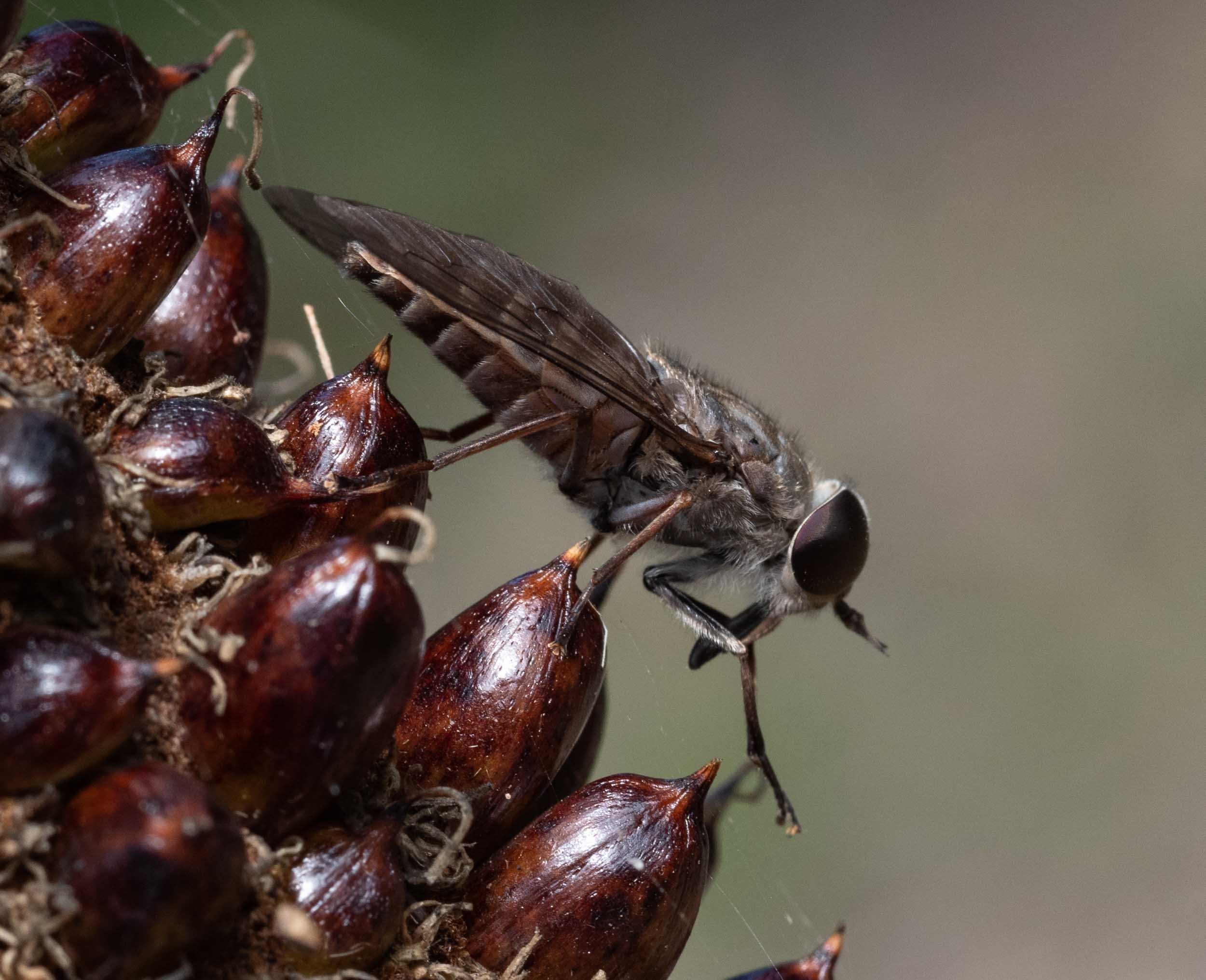
march fly
In late summer these rather notorious flies emerge, sometimes in very large numbers. And they bite! This summer has been particularly fly-filled, perhaps due to the high rainfall of the past few years. Tabanid larvae live in wet ground or aquatic environments, hunting invertebrates.
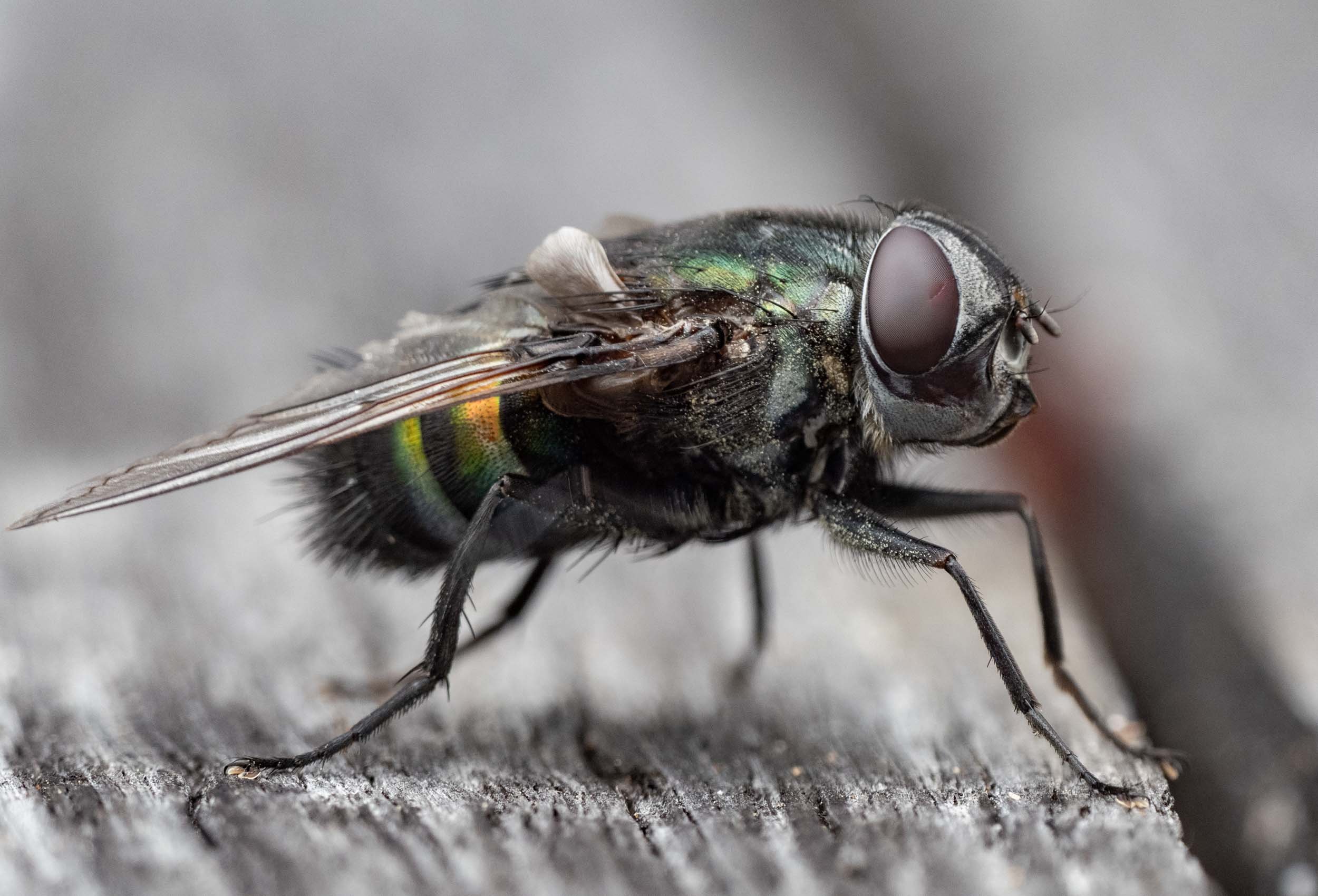
tachinid
This massive, metallic, bristly fly is harmless. No biting, no blood sucking. Tachinid larvae, however, are parasitoids. Among their hosts are caterpillars, beetle grubs and wasp larvae. Sawflies too … and we currently have large numbers of those clustered on eucalypt leaves (see Paul’s post Sawfly galleries)
Rutilia

ant fly
Small, hovering sluggishly, then settling on vegetation … and quite unlike any fly I’d seen before! It turns out that the adults are not common, and their biology fascinating. The larvae live inside ant colonies, feeding on ant larva and pupae … protected by a shell! In the past they’ve even been mistaken for molluscs! Little, tank-like armoured hunters.
Archimicrodon

a regular hover fly
This is the archetypal, ubiquitous hover fly. So very unlike its cousin the ant fly. Syrphine larvae are predators of aphids and other plant-sucking bugs. The adults are commonly seen at flowers, although at this time of year they are probably relying on honeydew.
Simosyrphus grandicornis
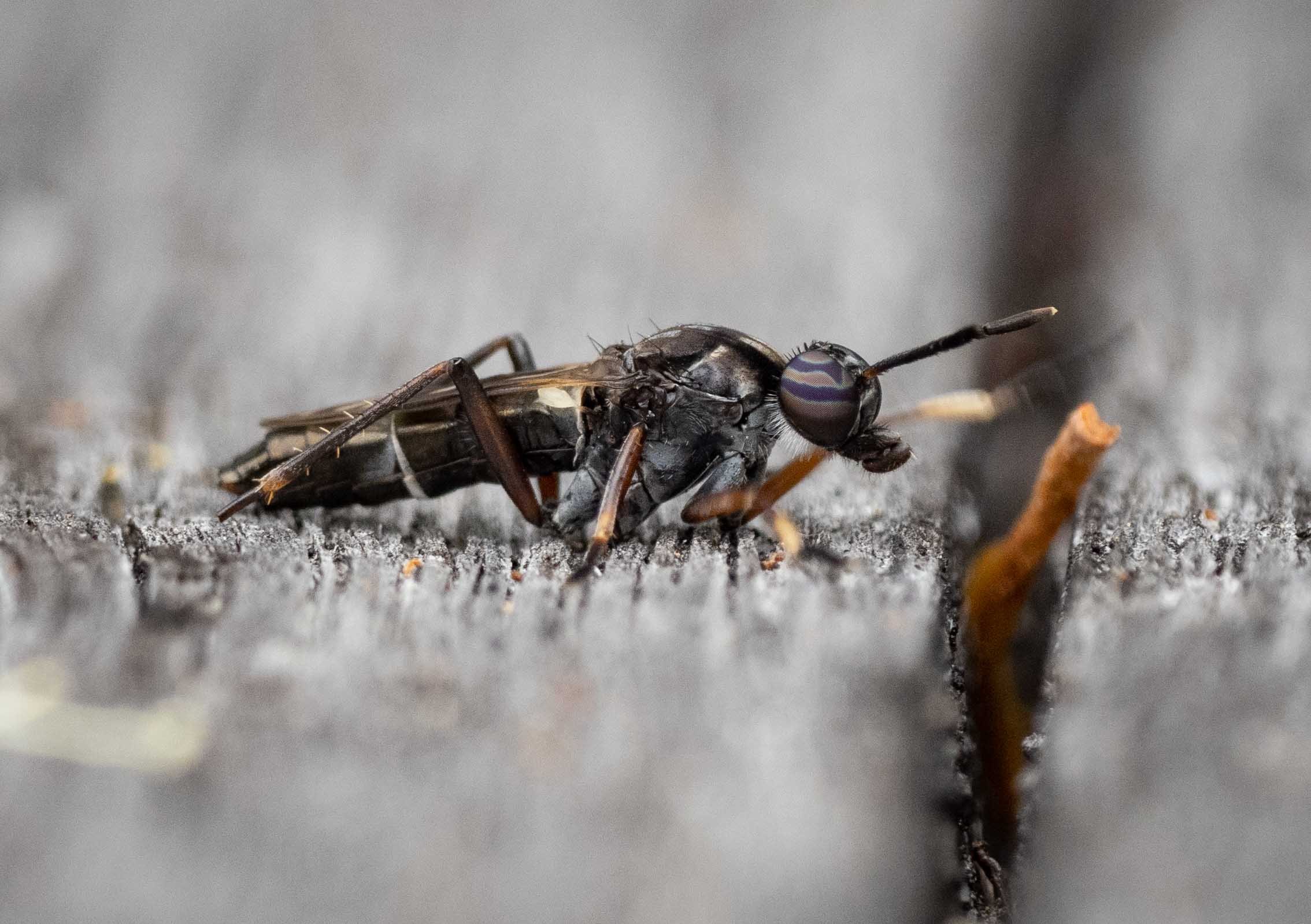
stiletto fly
Small, unfamiliar, and a remarkably forgiving photography subject … not flying, just waving a leg occasionally. Adults are nectar feeders but their wiry larvae are fossorial predators, hunting other invertebrates in dry soil.
Agapophytus queenslandi
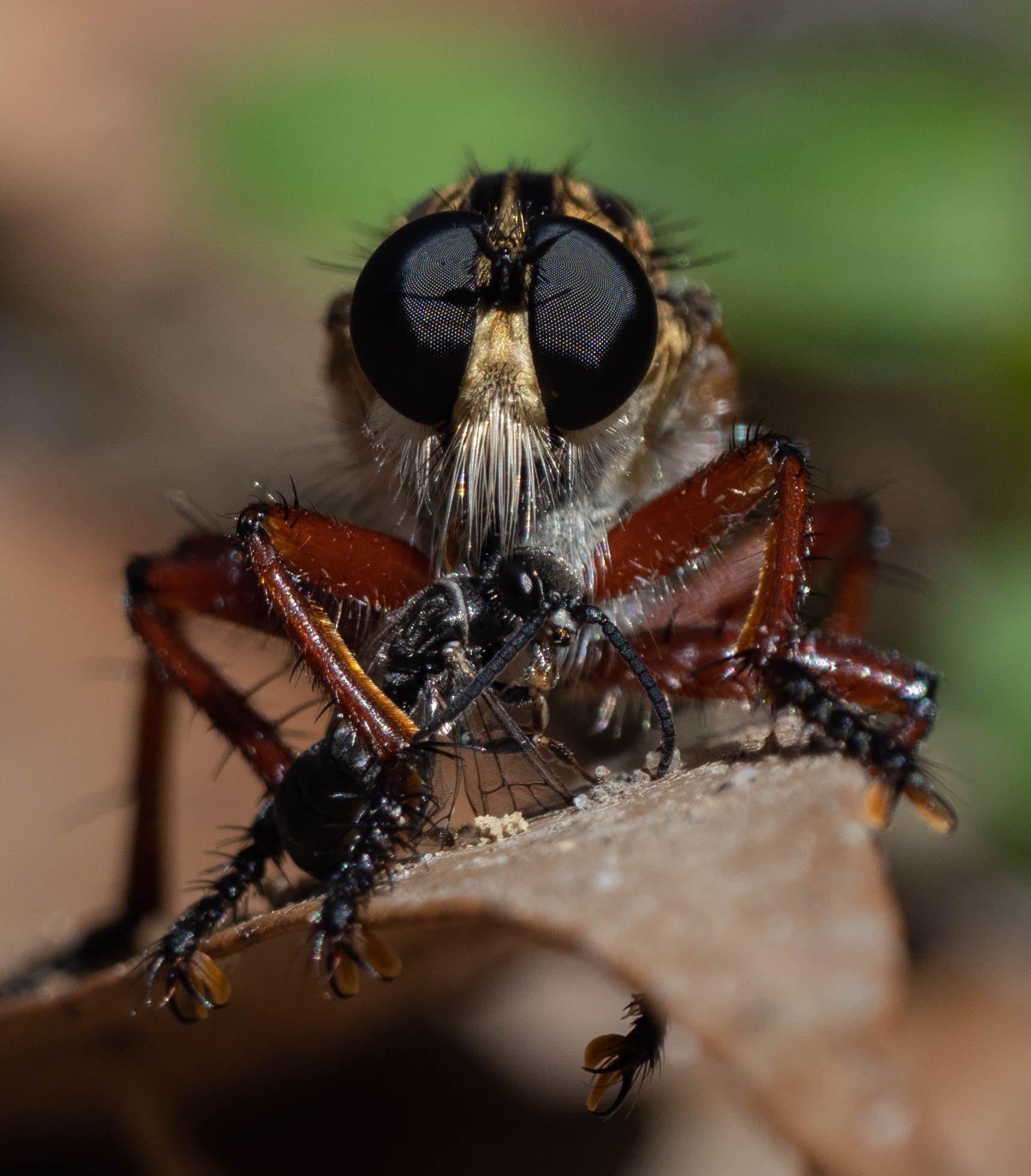
robber fly with flower wasp
Robber flies are accomplished aerial hunters, often taking well-defended prey. The fly has strategically impaled this flower wasp through the neck. Within seconds the prey had stopped moving completely.
Zosteria
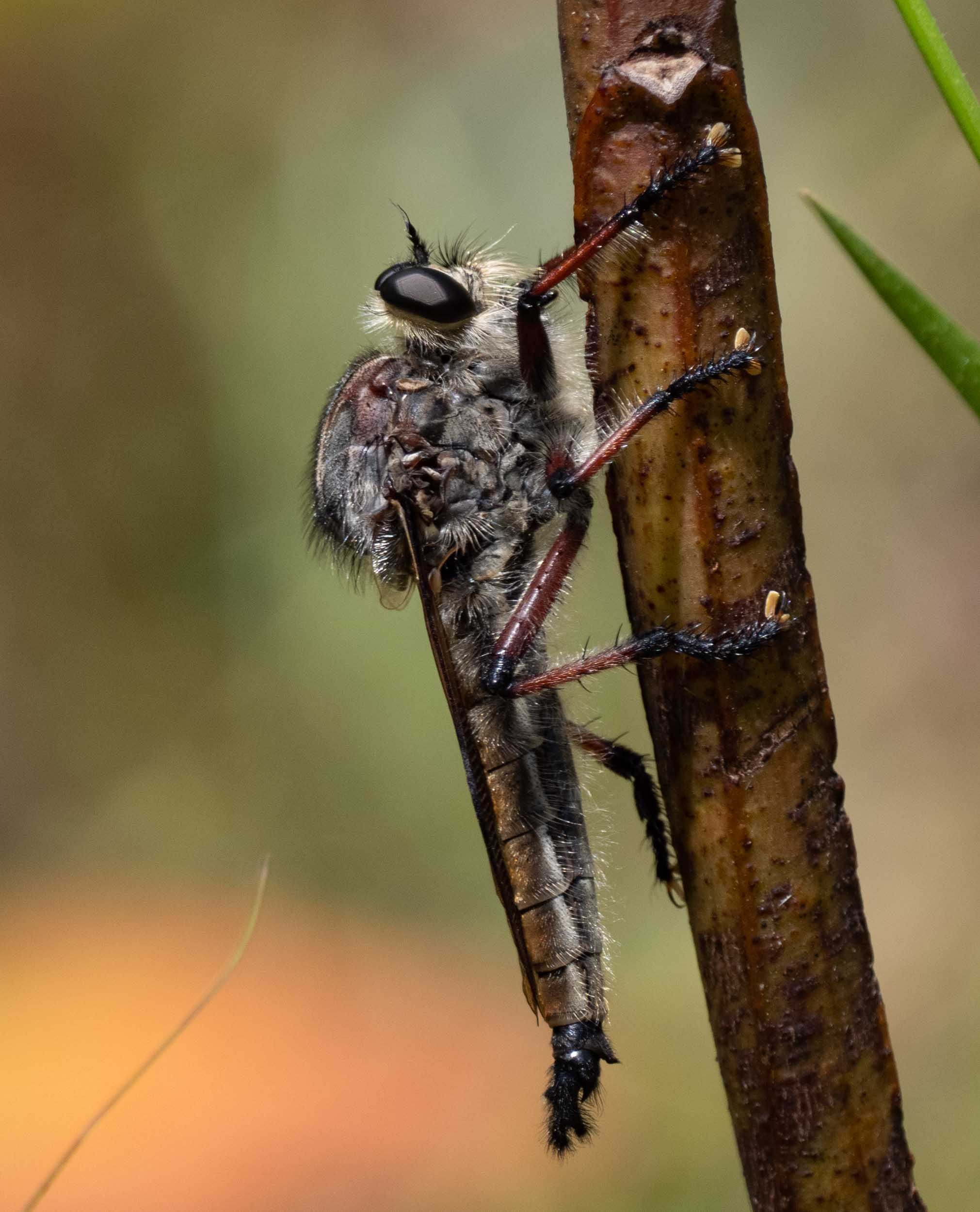
robber fly
Asilidae is one of the largest fly families. Australia has nearly 400 species of robber flies across 68 genera, most of them endemic.
Neoaratus hercules
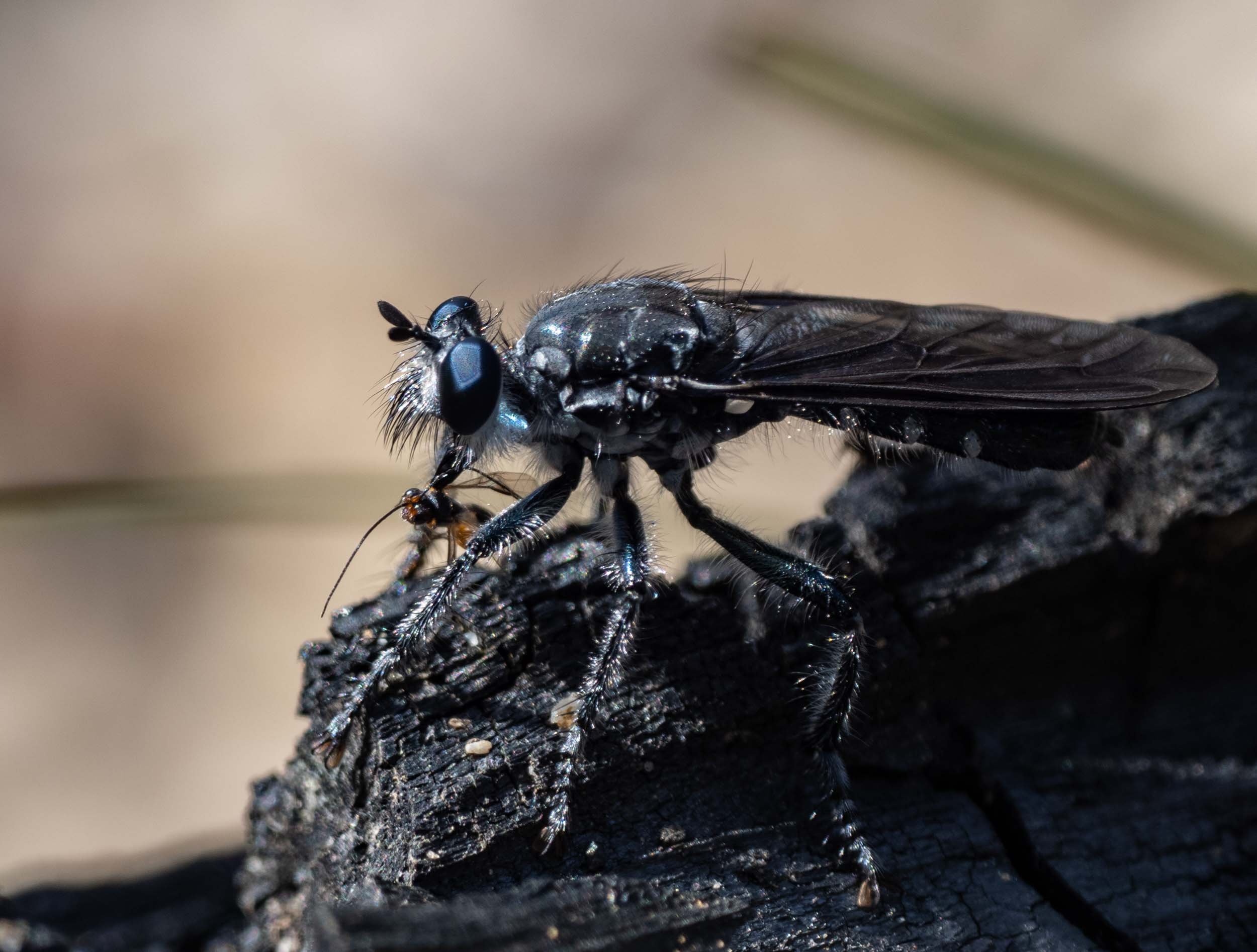
predators - as adults & as larvae
The larvae of robber flies typically live in soil, decaying wood or under bark. They hunt soft-bodied prey such as beetle grubs and digest them extra-orally before ingesting the liquified tissues. Just like their parents.
Orthogonis
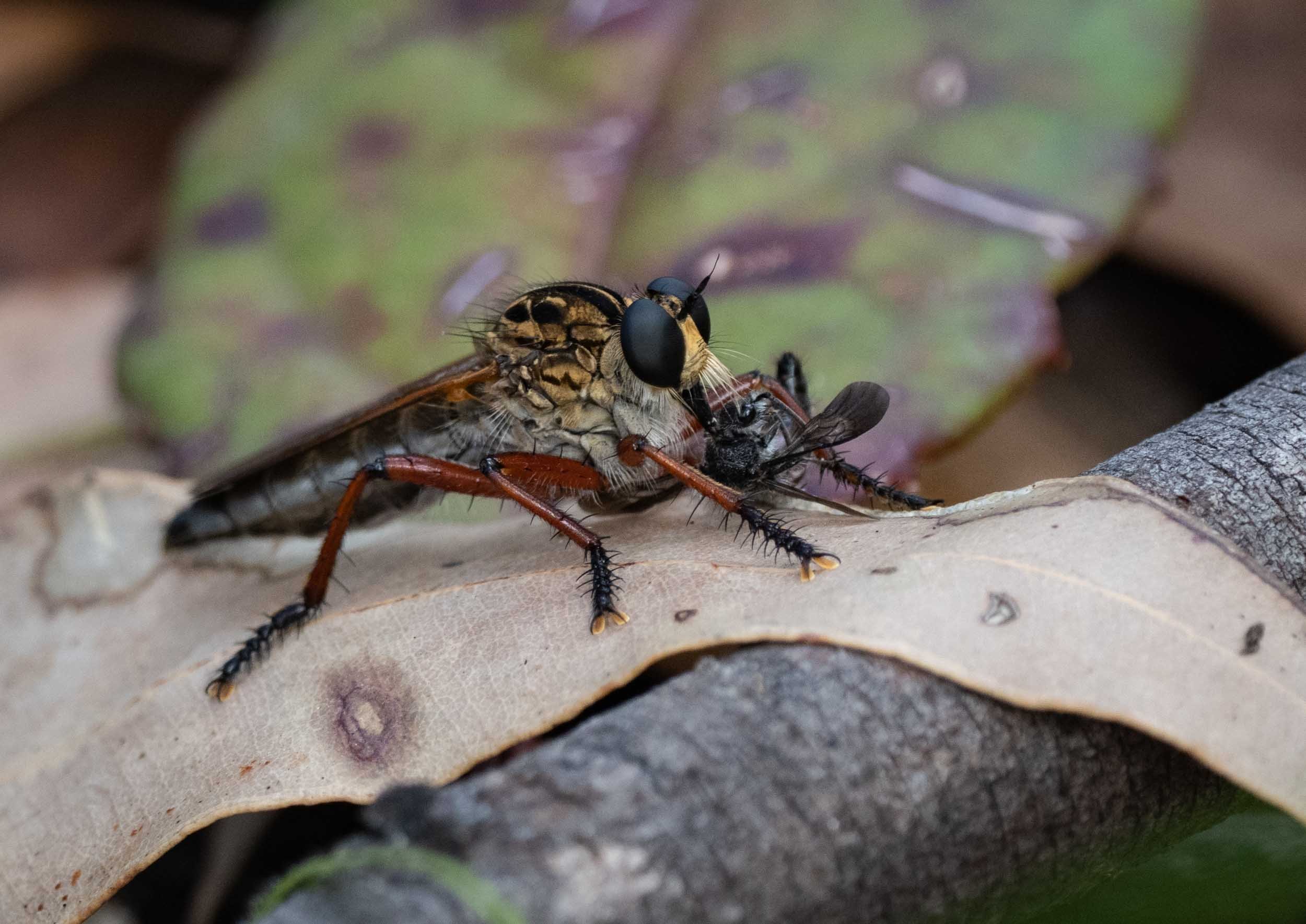
robber fly with velvet ant
I had been watching sand-nesting wasps and the associated patrols by velvet ants (Mutillidae), when this robber fly landed nearby. It appears to have nabbed one of the male velvet ants. That’s impressive, as mutillids are fast flyers.
[at least, I think it’s a mutillid … some flower wasps look quite similar]
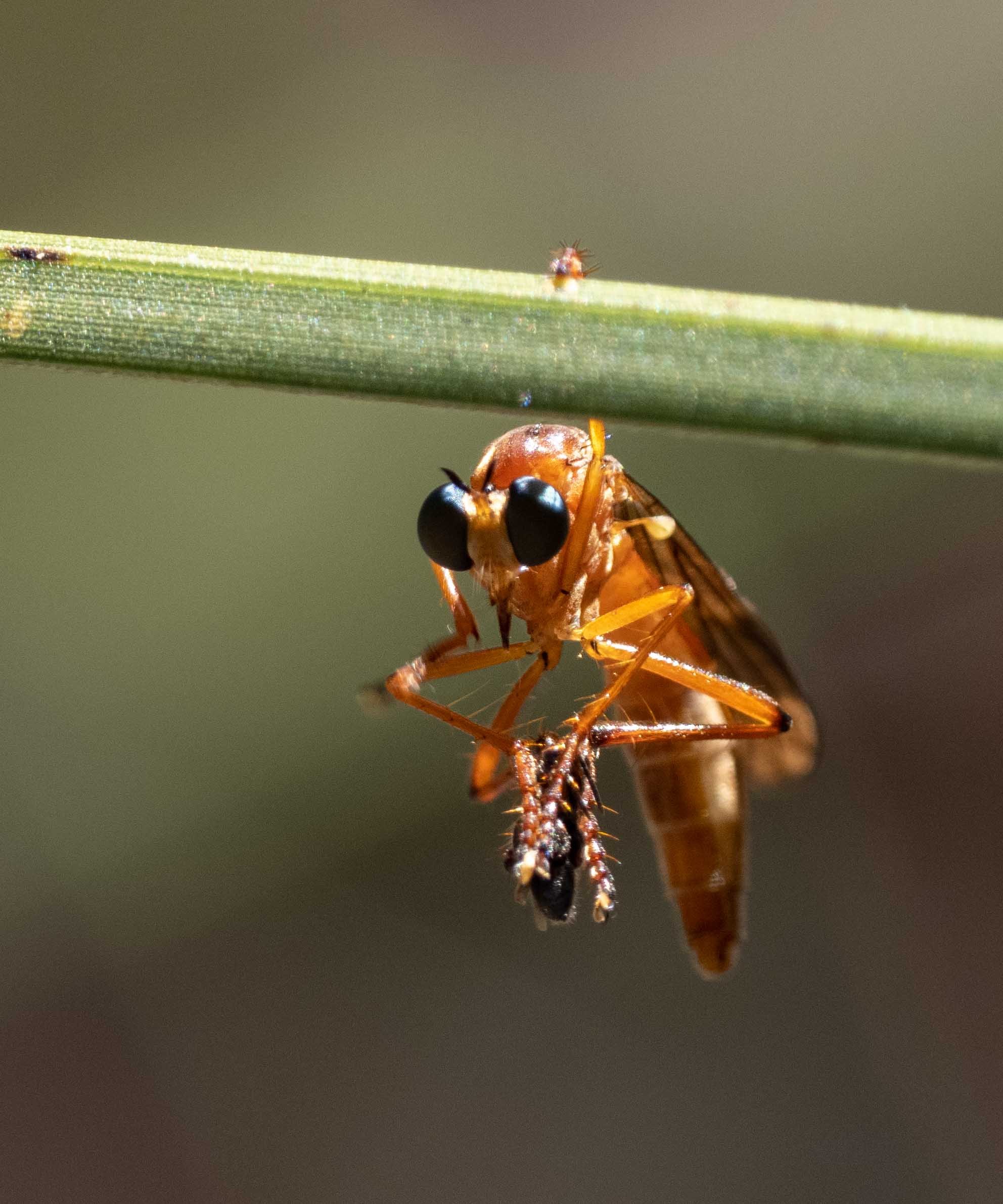
a mystery robber fly
Hanging by one leg while consuming prey is apparently typical behaviour for members of this subfamily. First time I’ve witnessed it, though. And the species identity remains a mystery too (see iNaturalist record).

robber fly with a large meal
Robber flies are among the most commonly photographed insects. They sit motionless, in the sun, often with impaled prey. It takes a while to liquify and ingest the contents of the hapless victim. The saliva of the robber fly contains nerve toxins (to immobilise) and enzymes (to break down proteins).

courtship display
These small, colourful flies slouch at the tips of plants … and dance. The moves involve repeated, alternating leg raises accompanied by wagging of the abdomen. Various members of the family are renown for their courtship display, so I assume that this one is trying to attract a mate.
Brachyrhopala ruficornis

small robber fly, tiny prey
This is one of the smaller robber flies we see, but it is still larger than many. Some species are just a few mm long! As a larva, this species probably prowled beetle burrows in wood.

yet another species of robber fly
Medium in size, yet willing to take tiny prey.
Cerdistus
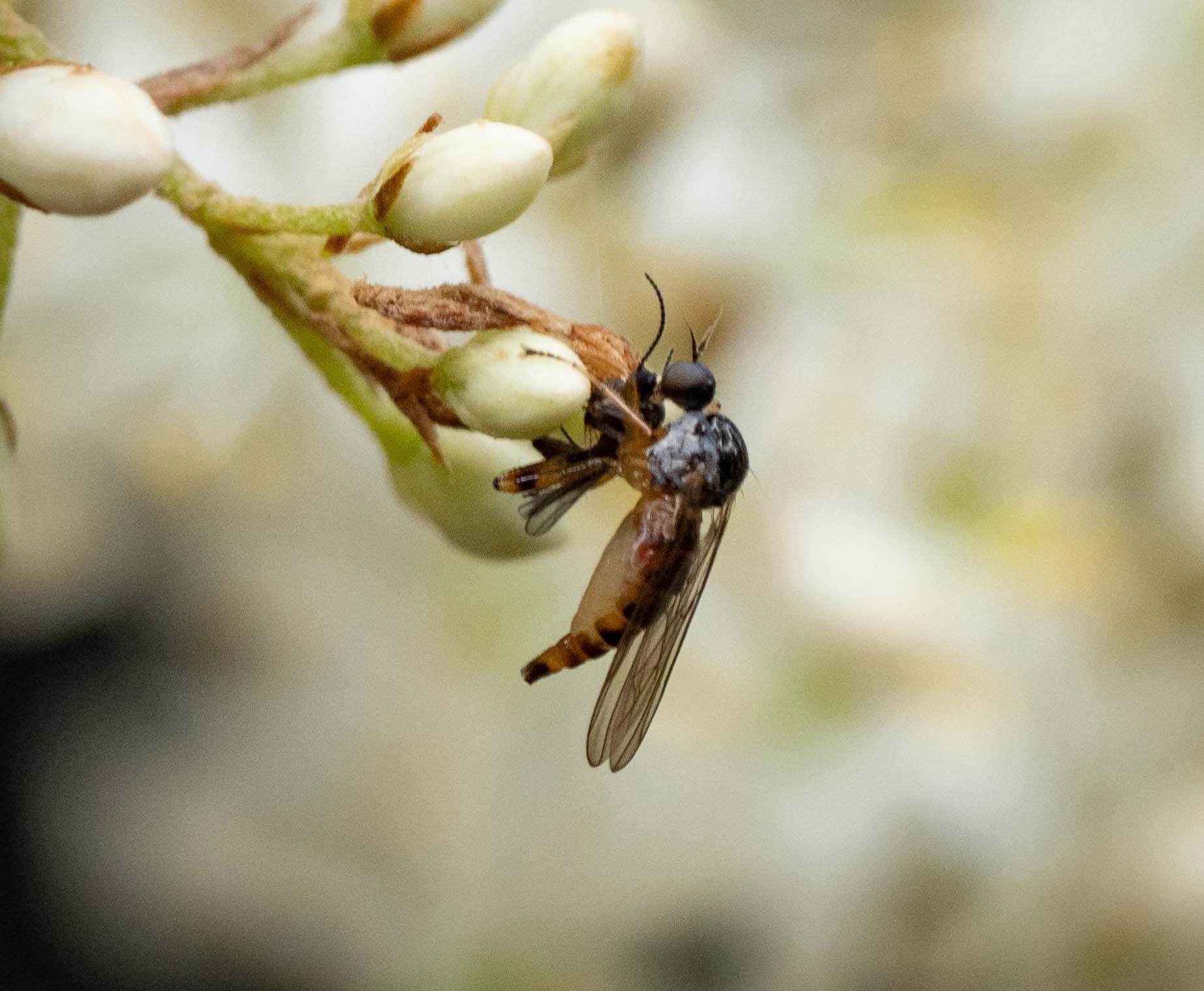
tiny dance fly
A tiny predator, with even smaller prey. They behave very much like robber flies, flying to and from hunting perches to seize flying insect prey.
Hoplopeza

blowfly
Amenia. A rather spectacular blowfly. Females deposit their well-developed larvae (i.e. maggots) onto snails … although the details are known for just a few species. And we really have rather few snails here (?)
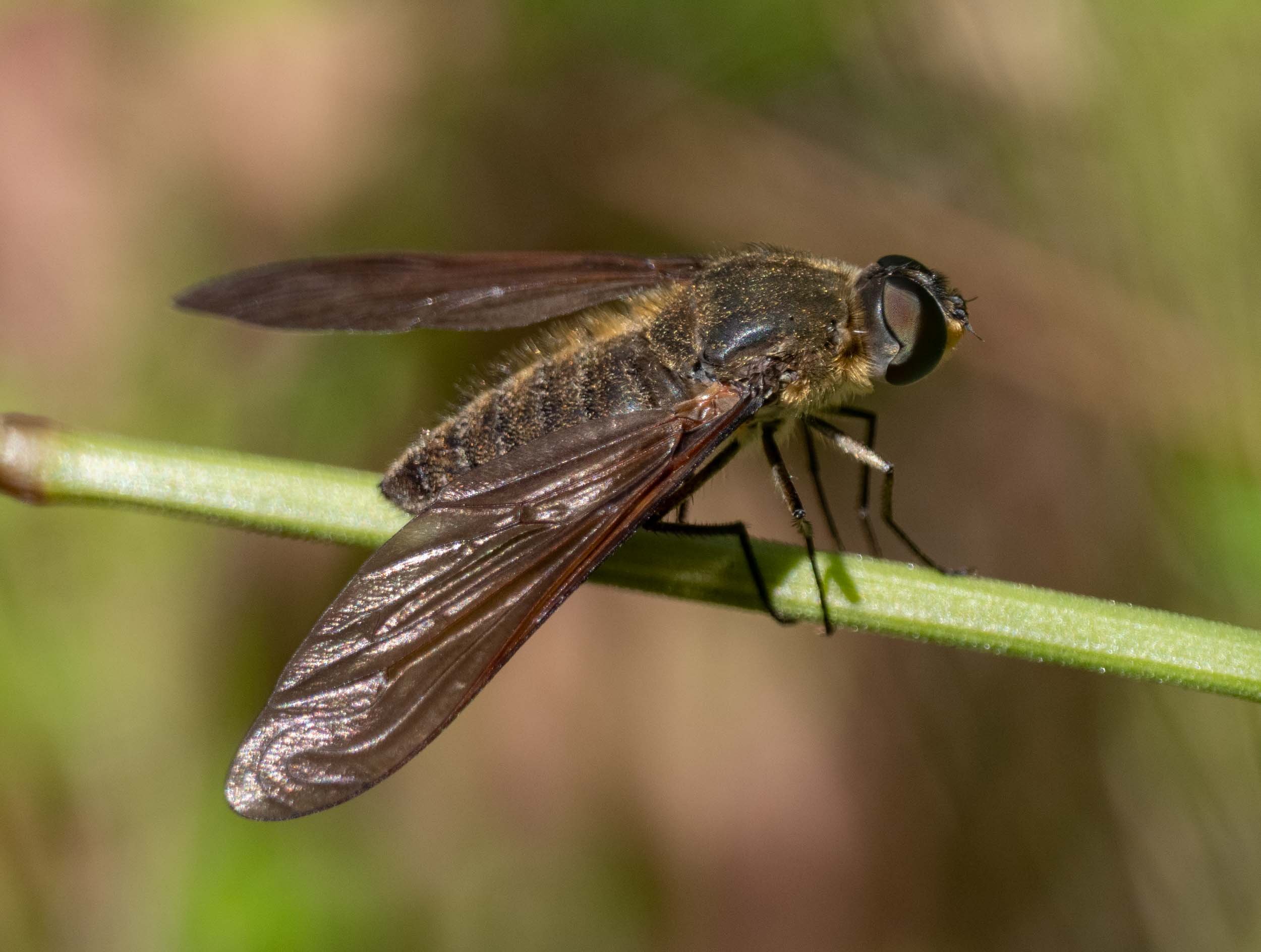
long-winged bee fly
Comptosia. The biology of this group is not well documented. The larvae may feed on ants, beetles or other insects.
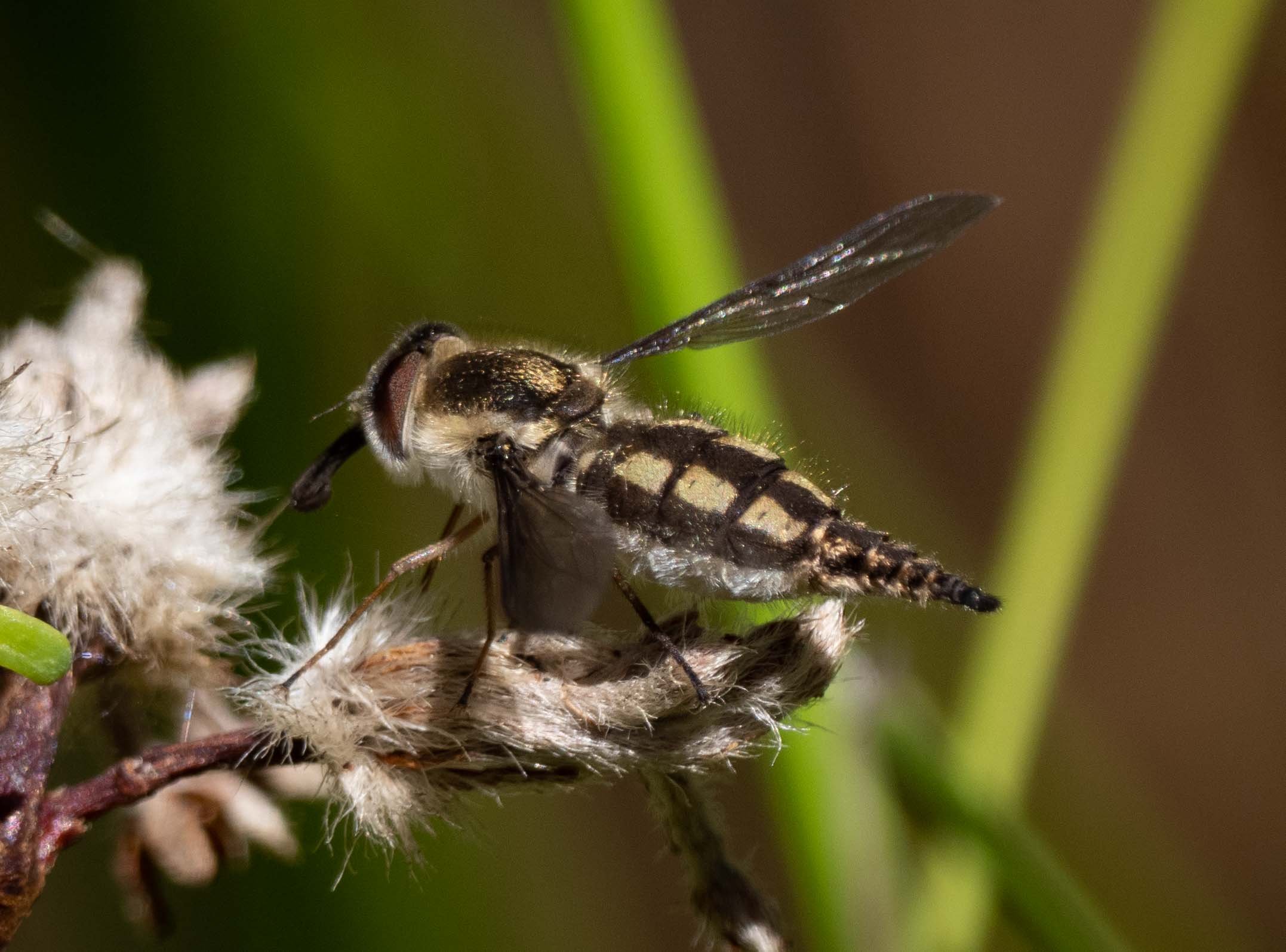
tangleveined fly
These fast-flying insects take only nectar as adults, despite that impressive looking proboscis. Females like this one will lay thousands of eggs amongst vegetation. The resulting larvae actively seek and penetrate their target hosts – grasshoppers & katydids.
Trichophthalma

bee fly
Adults are usually seen feeding on nectar at flowers or touching down on sand. Larva typically attack ground-nesting wasps & bees - as ectoparasites, kleptoparasites or predators.
Anthrax maculatus

bee fly
These banded bee flies are common and have been abundant all summer. They vary in size, and some are tiny.
Villa, or another member of the tribe Villini

signal fly
Males use that flat face to bump heads in defence of their territories. Larvae of this family typically feed on bacteria in decaying plants, fungus or dung, although some feed inside the root nodules of legumes.
Duomyia
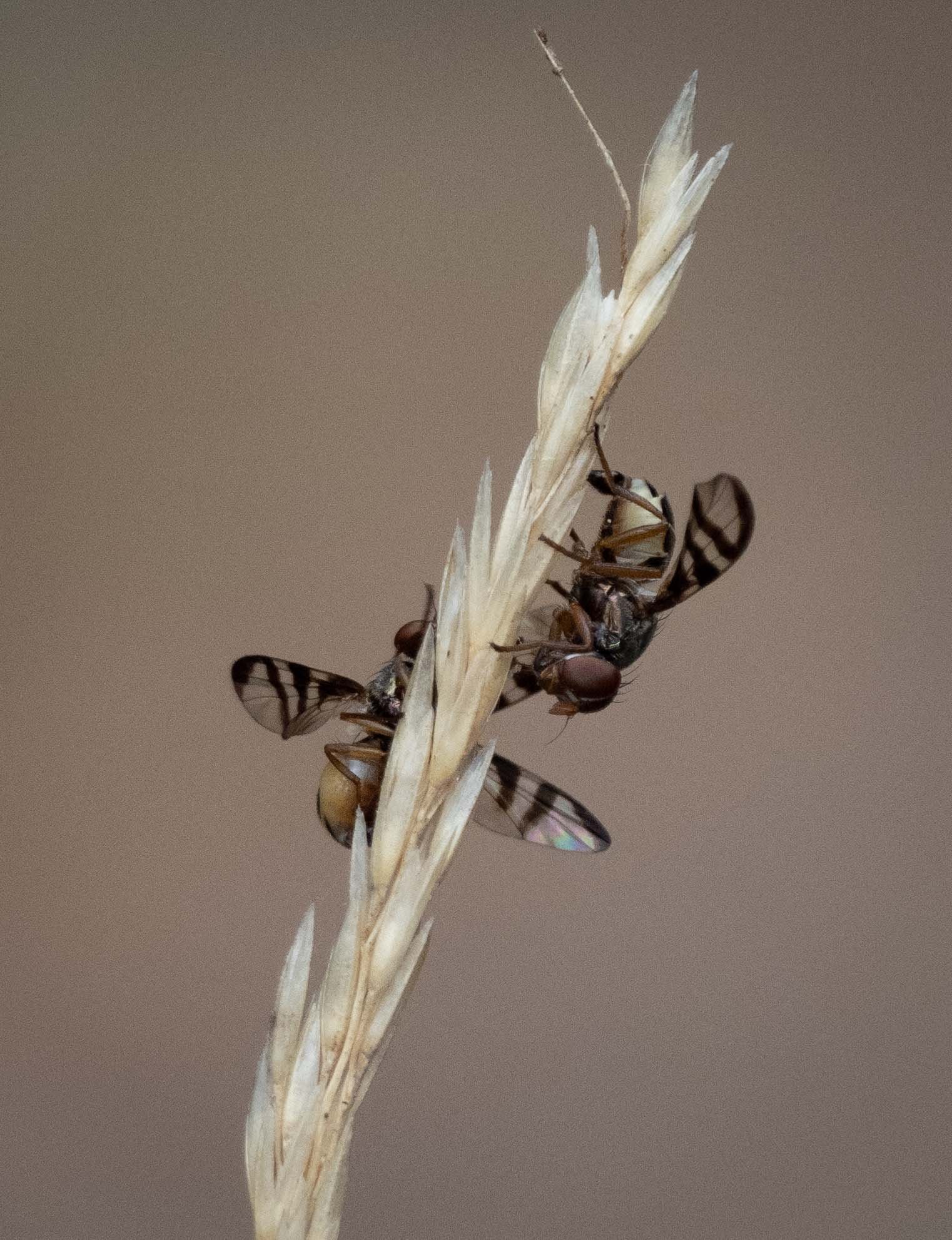
signal flies
Small and with the characteristically-marked wings of this genus … but this behaviour is novel. We commonly see Rivellia in mating swarms around fresh wallaby and wombat dung. But these two females were alone and quite intent on laying eggs into this dry grass seed head. I guess there are bacteria in all kinds of places.
Rivellia
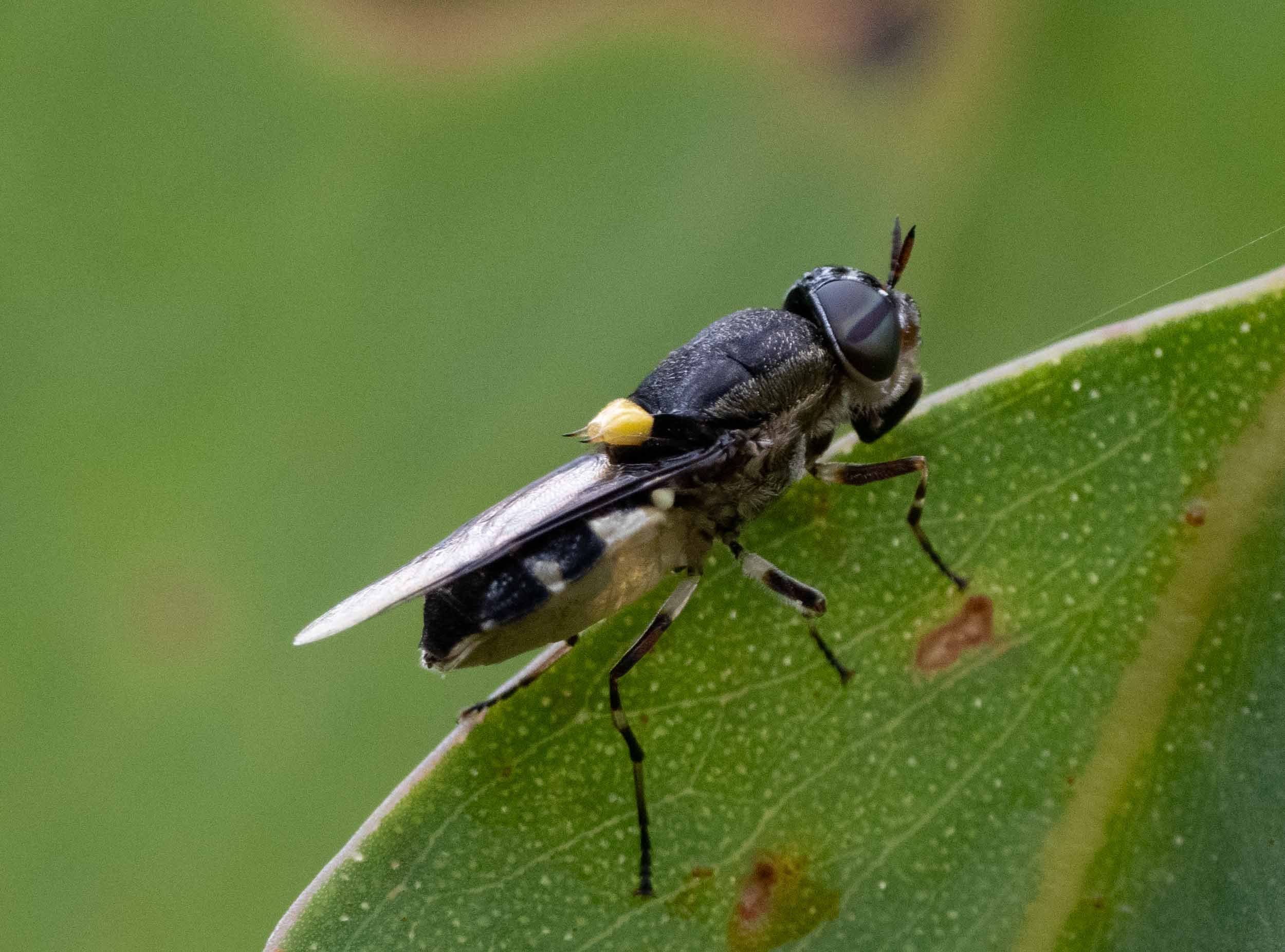
a novel soldier fly
Our first and only sighting of this species here in the forest. And given that the larvae are aquatic filter-feeders, perhaps that’s no surprise. Then again, we get dragonflies in large numbers …
Odontomyia hunteri
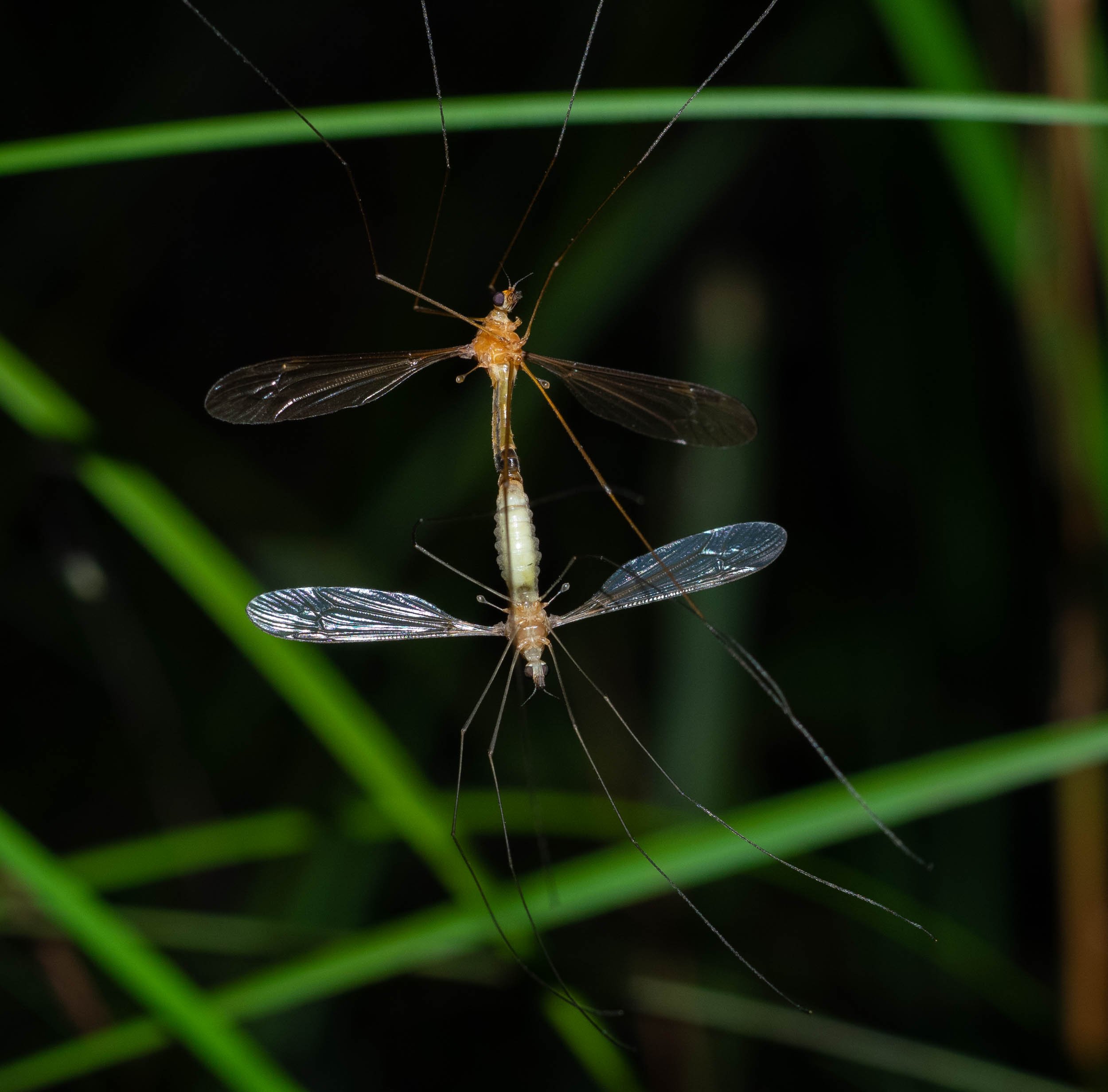
mating crane flies
Large, familiar crane flies. Larvae feed on decaying plant material, and may make a significant contribution to leaf litter break down.
Leptotarsus
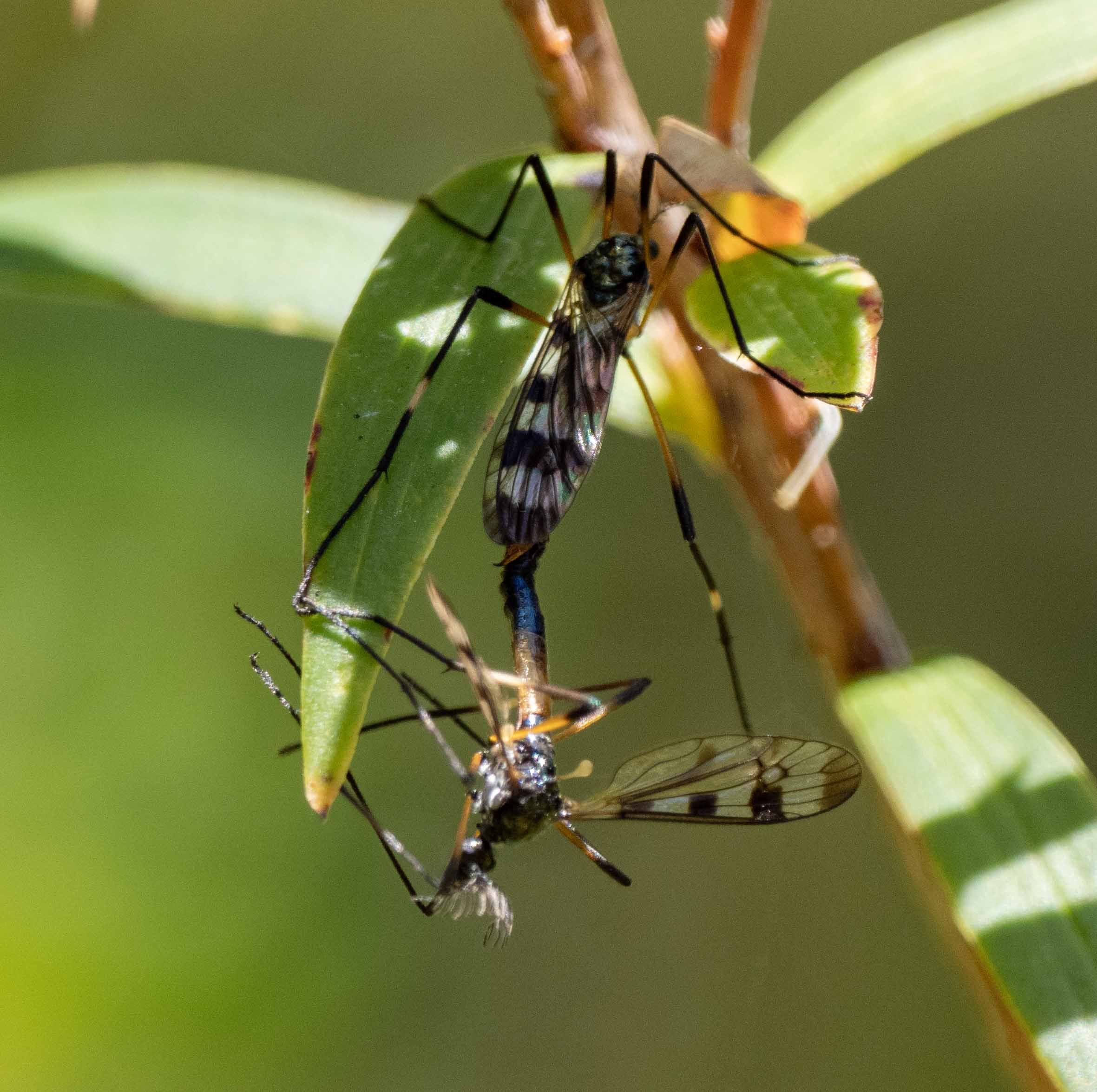
Limoniid crane flies
They look and behave rather like ‘regular’ crane flies, and were once grouped in that family.
Gynoplistia bella
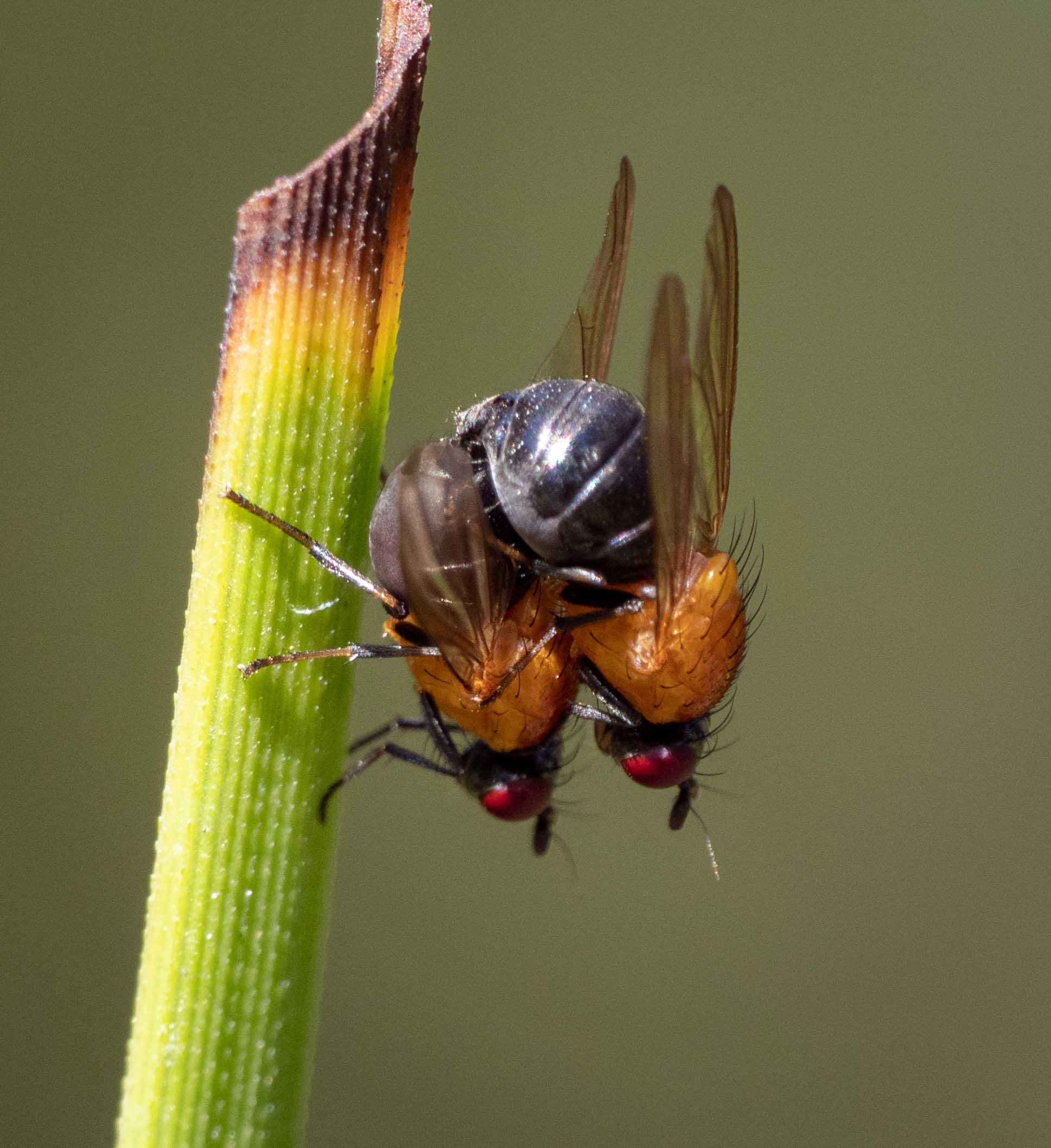
lauxaniid flies
Vegetarian, as adults and as larvae. Well, many feed on fungi and decaying plant material but that counts as vegetarian by most definitions.
Sapromyza


























